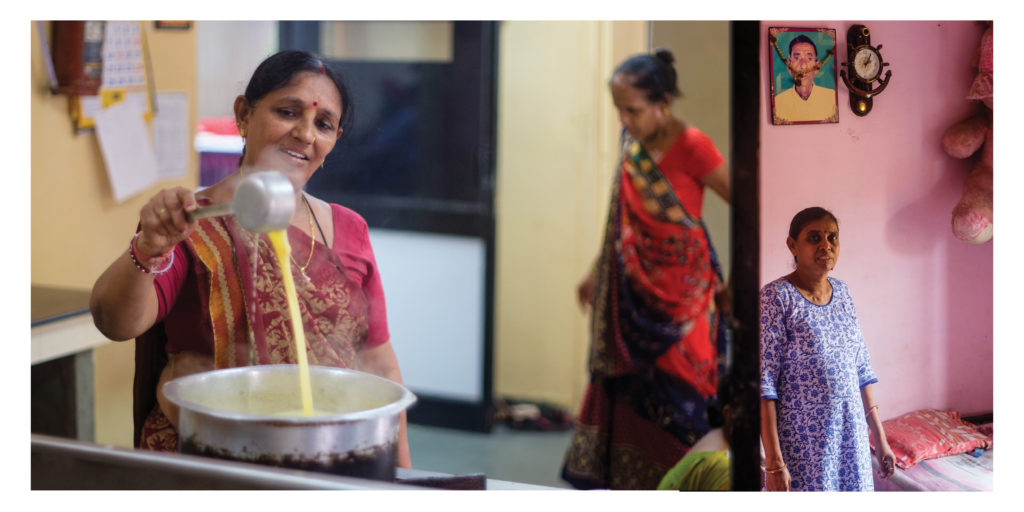
By Collin McClain, 12/26/2019. Over the course of 7 weeks in the Summer of 2019 I took over 20,000 photos in service to SEWA. But before attempting to select the most important, storied, and emblematic of these images to share with you, I would first like to first provide some context. What is SEWA?
First realized as a trade union in 1972 through the efforts of long time union organizer Elaben Bhatt, the Self Employed Women’s Association advocates for the rights of women workers in the informal economy, organizing to achieve the goals of self-employment and self-reliance. To achieve this, SEWA adopted two main approaches: The formation of a union which promotes solidarity and unity; and collectivizing women to form cooperatives. Since then, they have erupted into well over a hundred women’s cooperatives working in fields as diverse as banking, agriculture, home care, and artisan craft. In SEWA’s home state of Gujarat, 106 of these cooperatives have been organized together into a second level cooperative, the SEWA Federation. This organization’s mission is to support women’s collective enterprises in order to provide a sustainable livelihood to workers. It is an incubator/accelerator that supports cooperatives through services such as capacity building and training, marketing, business development, and digital inclusion. It is with the Federation that I was posted, and through them sent to the varied cooperatives in order to document their daily activities. In addition to the union, the cooperatives, and the Federation, there are also several trusts which support women in the informal economy through development in areas such as housing, sanitation, health, finances, and insurance.
As you can understand from this brief organizational overview, SEWA cannot be described as one single entity, and is rather a set of interconnected but separate parts, best thought of as sister organizations. What anchors these parts together is the idea behind SEWA. The idea that women have the right to claim their labor. That “women’s work” is work, and that it deserves fair pay, and fair living. In order to achieve these goals for the informal workers that SEWA is made up of, the Federation approaches this task through what they call “Sankalit” or an integrated approach. In their work they have found that to create stable livelihoods for themselves and each other, it is necessary to secure 11 key points in conjunction. If any one of these factors is not adequately supported, the rest crumble with it. Thus, each part of the SEWA community must work together to realize SEWA the idea.
SEWA’s 11 Key Points
- Employment
- Income
- Nutritious Food
- Health Care
- Child Care
- Housing
- Asset
- Organized Strength
- Leadership
- Self-Reliance
- Education
What follows is a series of images from across the range of cooperatives which I photographed during my time in India. As the SEWA organizations are made up of and for informal women workers I hope that these portraits, when taken together, become a portrait of these collective organizations.
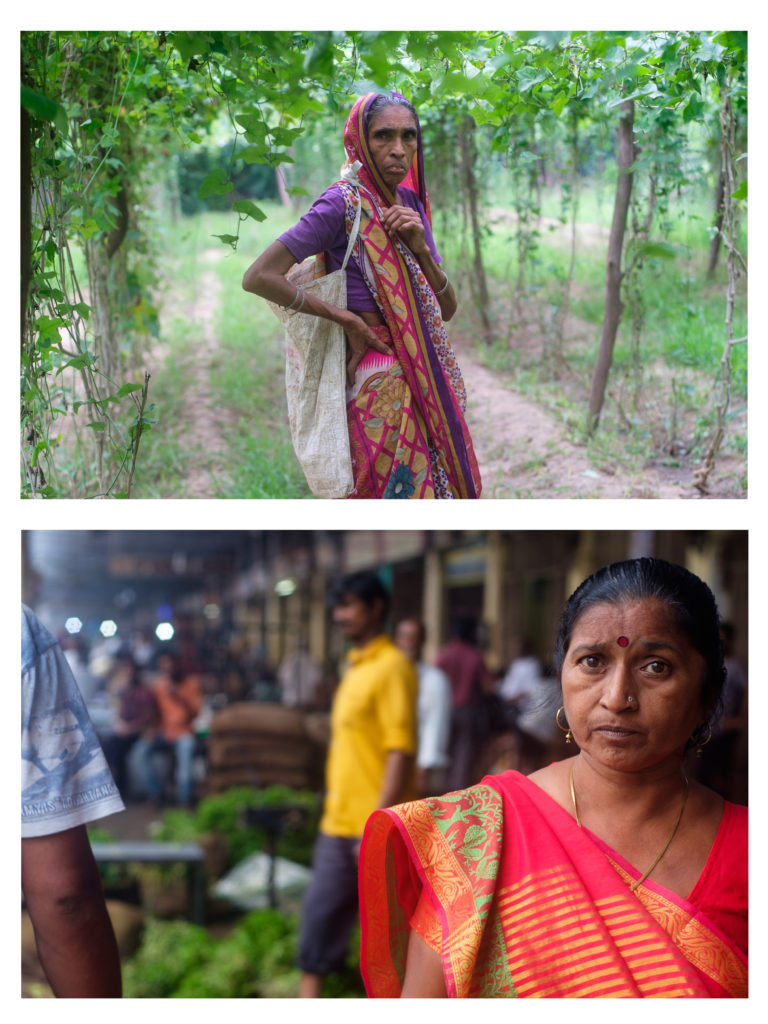
Top: Member of the Kheda agricultural cooperative.
Bottom: Dinaben in Shop 40 in the Jamalpur wholesale market where the Federation sells the produce grown by Kheda.
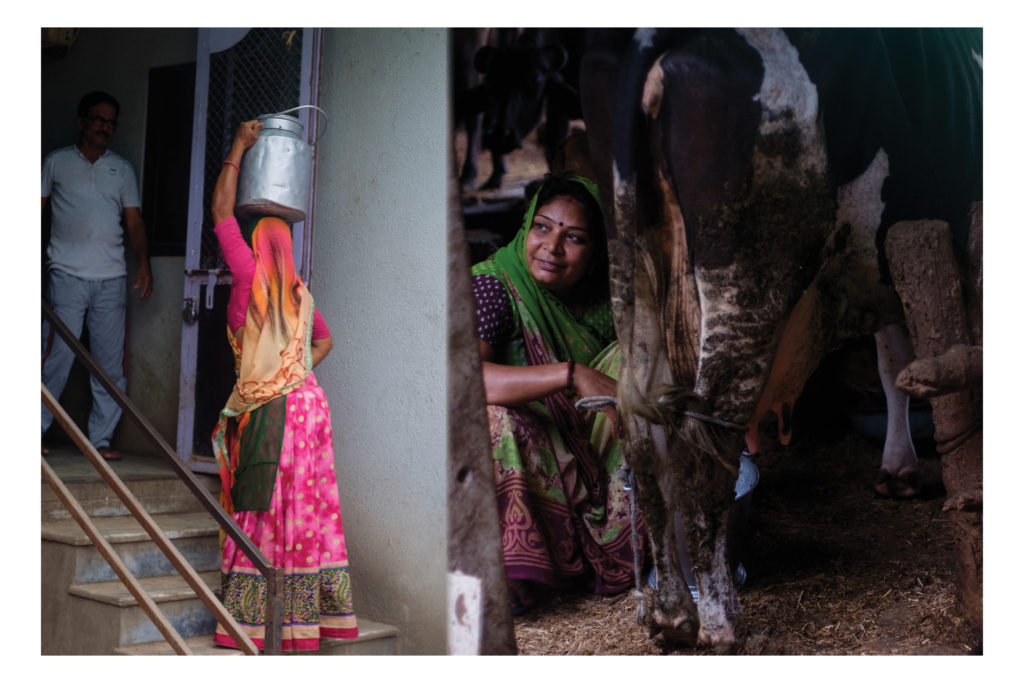
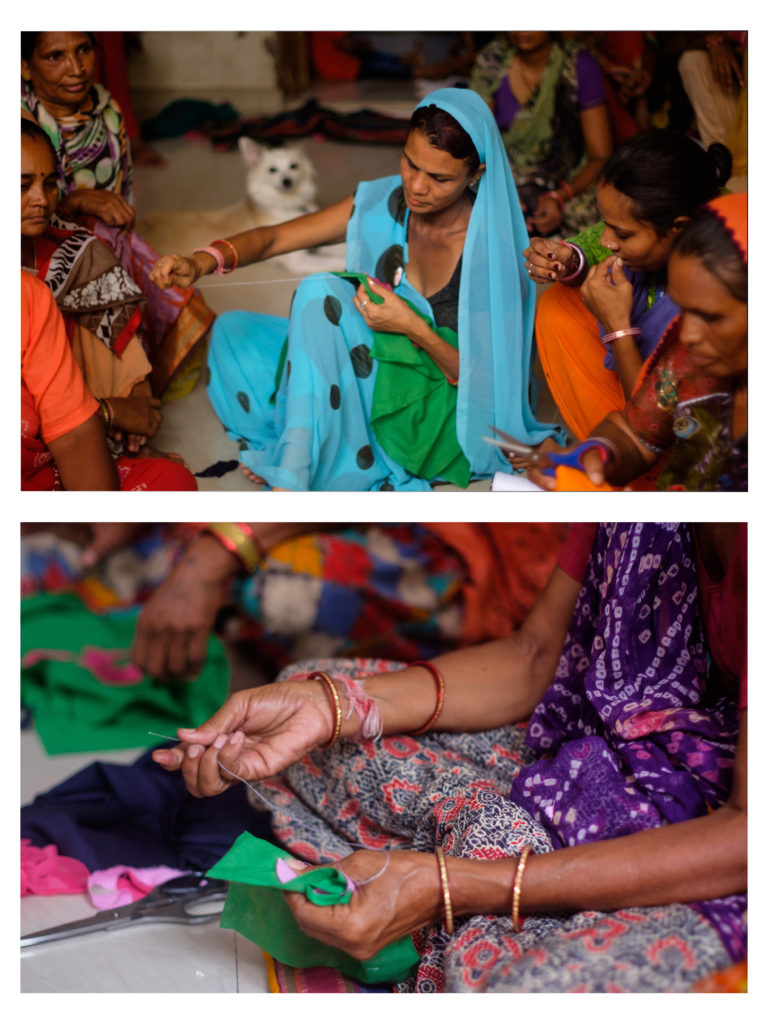
Above: Pethapur Dairy Coop.
Right: Artisan textile workers of the Abodana Cooperative at a training.
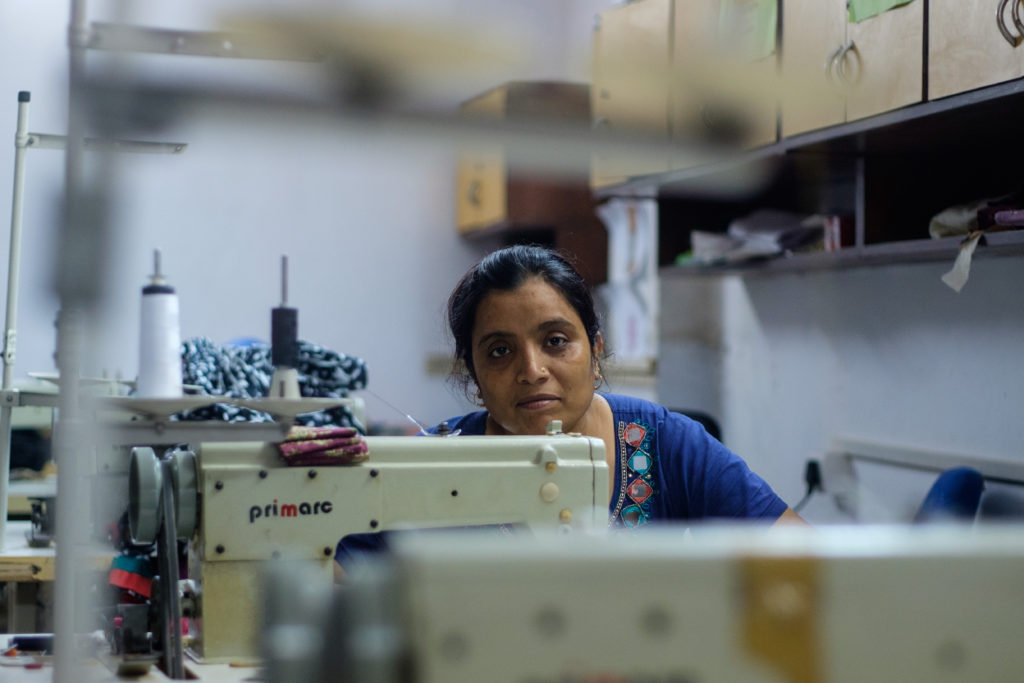
In the SEWA Federation offices they host the Kalakruti shop and an artisan unit that creates custom cloth goods. This type of business development work is central to the Federations mission. By building markets for their coop members they cut out the middle agents in the supply chain, ensuring better prices for the women workers.
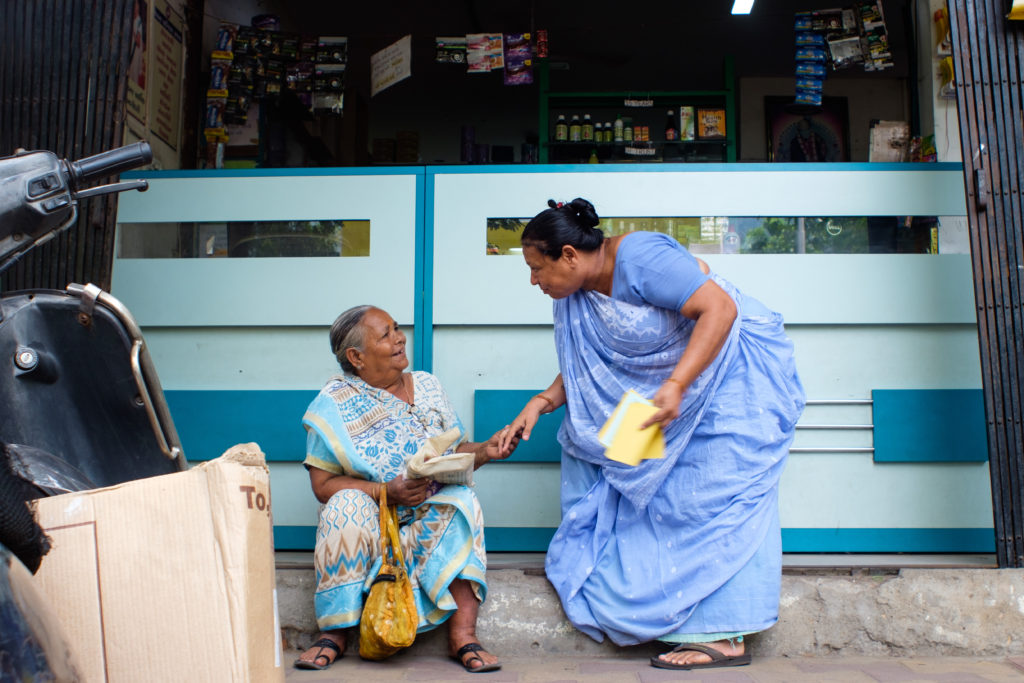
Above: Lok Swasthya Pharmacy. Below: Ayravadic Processing unit and Lok Swasthya Pharmacy
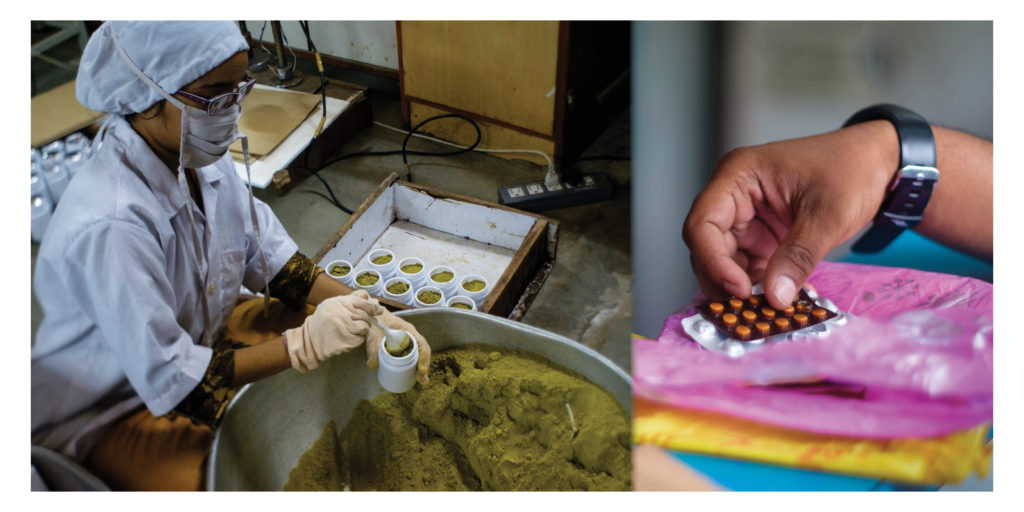
One of the core activities of the SEWA sister organizations is ensuring the health and wellness of their members. Beyond the members themselves though, the women work to support their entire communities. This community development spreads the mission of the SEWA organizations beyond the women, and turns what might traditionally be “women’s work” into a community effort with broad support, lessening the burden of the individual. The women become leaders and experts, care givers of community.
Below: Community outreach work of Lok Swasthya Sewa Trust.
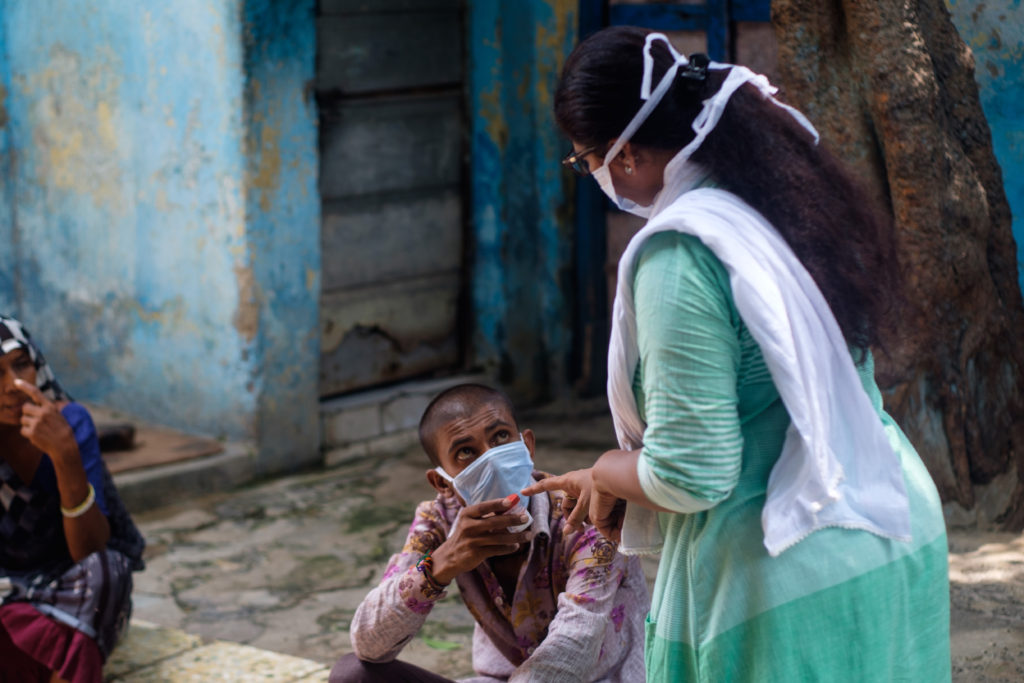
I hope that this broad swath of image gives some sense of the work, struggle, and care that goes into the SEWA sister organizations. As I have tried to show, they rely on interconnectivity and mutual support between each other. SEWA, understood as an idea or as a collection of women run organizations, works to turn an informal economy into a cooperative economy.
Women, raising each other up through an integrated, holistic approach, owning their labor as work, sharing in community together.
Below: The Trupti catering cooperative that runs several cafeteria in manciple buildings across Ahmedabad and a house hold worker in her own home.
